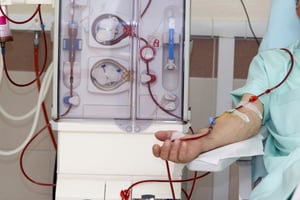All Surveillance Methods Are Not Equal
“Very high reproducibility and negligible impact of flow (Qb) on vascular access flow (QVA) determination justifies the current ultrasound dilution status as a reference method in QVA evaluation.” Lopot et al1
Two studies that compare the reproducibility and accuracy of various different methods used to measure vascular access flow during hemodialysis demonstrate that all surveillance methods are not equal.
In a study by Lopot (2003), Transonic’s ultrasound dilution technology was used as the reference method (Gold Standard) because of its high reproducibility at the same flow and at different flows. Methods compared included Duplex Doppler (DD), thermodilution (BTM Fresenius, Europe) and three Critline Hemametrics measurements: direct transcutaneous optodilutional QVA evaluation (TQA); direct optodilutional QVA evaluation from jumpwise changes in ultrafiltration rate at both normal and reversed needle connection (QABF) and optodilutional RX measurement (ORX).
The study concluded that all methods, with the exception of BTM thermodilution, fall short of being recommended as viable methods to measure vascular access blood flow. The authors acknowledge that thermodilution correlated well with ultrasound dilution and could be used as a viable alternative method.
In a study by Eloot (2010), three access flow (AF) monitoring techniques — ultrasound dilution, blood temperature monitoring (BTM), and online clearance monitoring (OCM) —were evaluated. The impact of the time of a dialyzer blood flow (QB) measurement and the patient’s position was also investigated.
Ultrasound dilution and BTM measurements were repeated in 10 patients at Qb 200 mL/min: in 15 patients at the first weekly HD start and end, and at the midweek HD start, and switching position during mid-week.
The study concluded that access flows measured ultrasound dilution and BTM correlated well and may be measured at flows 200-300 mL/min in all measured positions. Online clearance monitoring (OCM) was unreliable for measuring AF and was therefore further omitted.
References:
Lopot F, Nejedly B, Silkova S, Blaha J, “Comparison of Different Techniques of Hemodialysis Vascular Access Flow Evaluation,” Int J Artif Org 2003; 26(12): 1056-1063. (Transonic Reference # HD372A)
Eloot S, Dhondt A, Hoeben H, Vanholder R, “Comparison of Different Methods to Assess Fistula Flow,” Blood Purification 2010; 30: 89-95 (Transonic Reference # HD7973V)




